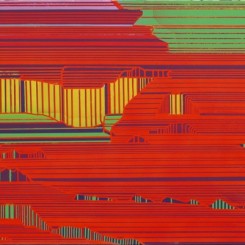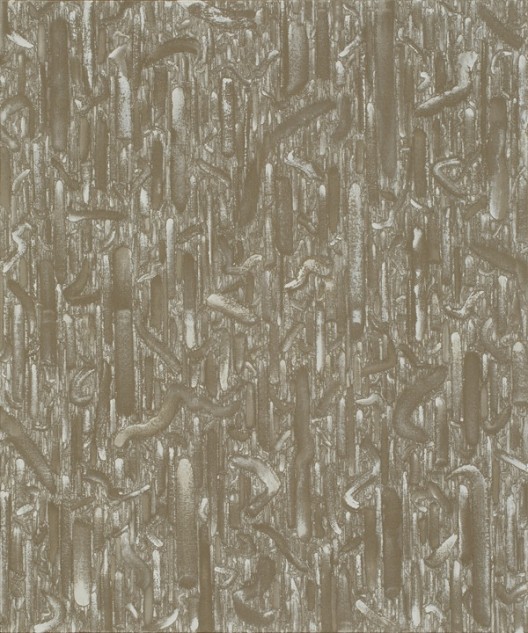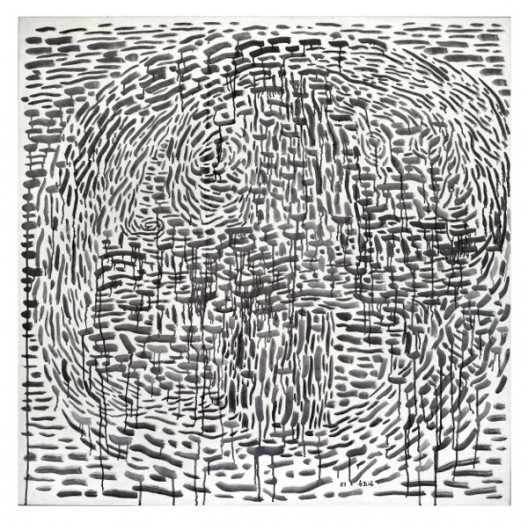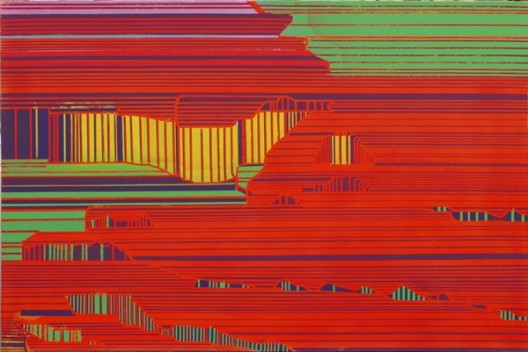[Press release]
White Cube Mason’s Yard presents “The world is yours, as well as ours”, a group exhibition that explores modes of abstraction in recent Chinese painting featuring works by Jiang Zhi, Liang Quan, Liu Wentao, Qian Jihua, Qin Yifeng, Su Xiaobai, Tang Guo, Yu Youhan and Zhou Li.
The history of abstraction in the West can be seen to chart a clear trajectory, beginning with the advent of Modernism in the early part of the 20th century and the work of artists such as Kandinsky, Malevich and Mondrian. In China, however, the language of abstraction developed independently through diverse influences. These include traditional calligraphic aesthetics, Taoist philosophy and the repudiation of dominant forms of Socialist-Realist painting promoted during the Cultural Revolution.
Liang Quan (b. 1948) refers to his mixed media collages which incorporate rice paper and ink as ‘abstract diagrams of traditional Chinese landscape’. Following a period of study in San Francisco, he became interested in the work of Richard Diebenkorn with whom he shares an affinity; using geometric forms, spatial relationships and passages of ‘empty space’. Also inspired by Zen Buddhism and meditation, an ‘emptiness’ is realised with intricate, subtle details, ‘driving simplicity with complexity’.
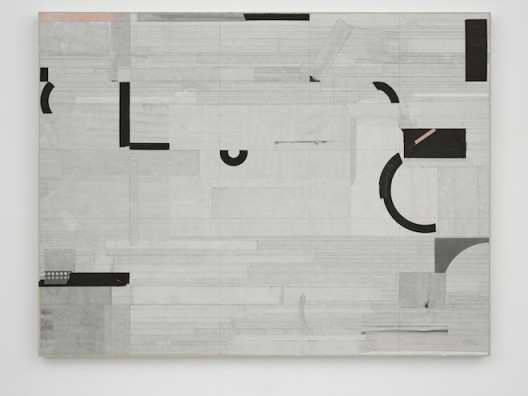
Liang Quan, Lotus Pond II, 2016
Ink, colour and paper collage on canvas, 48 1/16 x 63 in. (122 x 160 cm)
Qian Jiahua’s (b. 1987) spatial compositions comprise solid blocks of colour, anchored with borders and lines that subtly disrupt the flatness of the image. Through a manipulation of line and through variations in hue, the rhythmic balance of angular forms and colour relationships in the paintings create a pliant, almost playful rigour.
Zhou Li
The paintings of Zhou Li (b. 1969) take their cue from natural surroundings such as the mountainous landscape of southern China. The works in the exhibition employ free-flowing lines of charcoal and washes of ink, overlaid with solid arcs and circles of white paint, in delicate, harmonious compositions.
In the works of Jiang Zhi (b. 1971), from which the exhibition takes its title, the ‘system errors’ from a computer screen, where a data glitch causes a corrupted or fractured image, are rendered in large-scale to create complex patterns and forms. Hovering between representation and abstraction, the paintings’ dynamic composition and palette are meticulously translated by hand from screen to canvas.
Echoing the structure of traditional Chinese calligraphy, where characters are detailed in vertical columns, the monochromatic paintings of Qin Yifeng (b.1961) feature perpendicular stripes, interrupted by sinuous brush marks. The application of the strokes, through repetition, is akin to the physical expression and emotion channelled through calligraphy as well as to the spontaneity of gestural abstraction.
The congruent structures of Yu Youhan’s (b.1943) ‘Circle’ paintings are an exploration of the harmonious unity expressed within Taoism (yin and yang) as well as, in his words, a metaphor for both the fleeting moment and eternity. A pioneering figure of the ’85 New Wave’ group, considered to be one of the first contemporary art movements in post-liberation China, Yu has repeatedly returned to abstraction in his practice as a metaphysical exploration of ‘nothingness and being’.
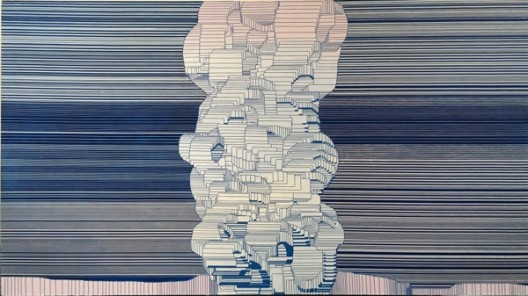
Jiang Zhi, The world is yours, as well as ours — Display 24, 2015-2016
Oil on canvas, 86 5/8 x 153 9/16 in. (220 x 390 cm)
Su Xiaobai
Using the ancient techniques of Chinese lacquer work, Su Xiaobai’s (b.1949) monochrome paintings are informed by the traditions of Buddhist philosophy and its notion of ‘everything is nothing, nothing is everything’ as well as by Western abstraction, which he first experienced during his time as a student at the Kunstakademie Dusseldorf in the 1980s. The paintings have a sculptural quality, expanding in convex form from the wall, using layers of lacquer to produce a shimmering, opalescent surface.
Liu Wentao
Liu Wentao’s (b.1973) paintings are made with densely applied graphite pencil lines, drawn in straight rows which, through marginal mathematical adjustment, interweave to produce compact, refracted surfaces. Surveying the dichotomy between the ‘concrete, and the Void’, a central tenet of Taoism, Liu also takes inspiration from the minimalism of Agnes Martin and Ellsworth Kelly, whose work he encountered during his studies in the USA.
Tang Guo
The ink wash paintings of Tang Guo (b.1955) equally have their roots in ancient Chinese artistic traditions. Using both chance and controlled brushwork, the paintings convey a variety of colour gradations and a decentralised perspective, which resonates with ideas of post-painterly abstraction.
